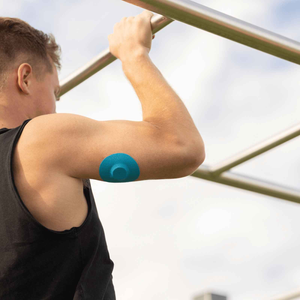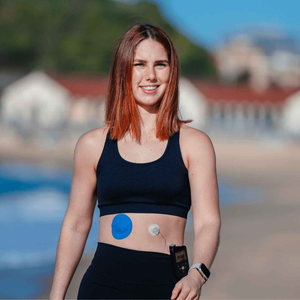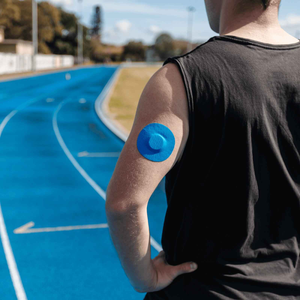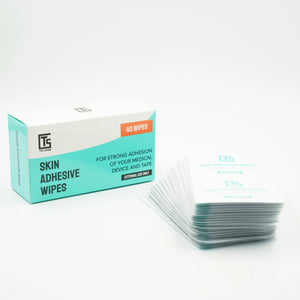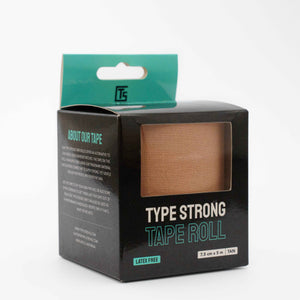Travelling with a CGM can be freeing - you can explore, enjoy meals, and manage your glucose levels without constant finger pricks. But diabetic travel also comes with its own challenges. Unpredictable weather, sweat, airport security checks, and long travel days can all take a toll on your CGM patch.
Whether you’re heading off on holiday, visiting family, or travelling for work, a little preparation goes a long way. The key? A small, lightweight kit of CGM essentials so you’re never caught off guard if your adhesive starts peeling mid-flight or you need to replace a sensor in a hotel room.
Your CGM travel checklist
1. Spare CGM patches
Always bring more patches than you think you’ll need. Flights, hotel air-conditioning, or moving differently in new environments can all lead to peeling or sweat build-up. Having spare patches on hand means you won’t have to worry about losing sensor contact mid-trip.
We recommend packing:
|
Travel length |
Patches to pack |
Extra tips |
|
1–3 days |
1–2 per day |
Pre-cut patches save time in small spaces |
|
4–7 days |
8–12 |
Choose breathable patches for warm climates |
|
8+ days |
10–15 |
Bring a mix of device-specific and universal patches |
If you use a specific device, such as Dexcom G7 or Omnipod, consider bringing device-specific patches from our CGM patch collection for the best fit.
2. Skin prep and adhesive wipes
Humidity, sunscreen, and sweat can all interfere with adhesion. Pack a few skin adhesive wipes and alcohol swabs in a ziplock pouch. Wipes help remove oils and boost hold, which is especially helpful when you’re applying patches in less-than-ideal settings.
If you have sensitive skin, always patch test if you have sensitive skin before using anything new.

Need a refresh on technique? See our tips on proper skin prep.
3. Travel-friendly tape roll
For emergency re-stick moments (like catching a patch on a backpack strap), a tape roll can be a quiet hero. Tear off just what you need to hold down an edge until you can reapply fully.
It’s especially helpful for active users or if you’re hiking, sightseeing, or on the move all day.
4. Sensor change gear
Even if you're not expecting to change your sensor mid-trip, it’s smart to bring at least one backup set. That means:
- CGM sensor and reader
- Alcohol wipes
- Fresh patch
- Disposal bag or container
This is especially useful if you're using Freestyle Libre for the first time or travelling with a newer device.
5. Aftercare for adhesive irritation
Longer wear time, friction from clothes, or sticky climates can all increase the risk of CGM patch reactions. Pack a small tube of your usual barrier cream (if approved by your healthcare provider), plus a few cotton pads or gentle bandages.
For more comfort-focused advice, see our post on post-adhesive skin care to help soothe and protect skin after travel wear.
Bonus tip: Pre-pack a “day kit”
Keep a mini kit in your carry-on or bag for long travel days. Include:
- 1 spare patch
- 1 alcohol wipe
- Small scissors or pre-slit patch
- Travel-size hand sanitiser
- Contact info for your CGM provider or device
If you’ve ever had a patch peel mid-flight or during transit, you know the value of having a back-up close at hand.
People Also Asked
- How many CGM patches should I pack for a week-long trip? We recommend packing at least one patch per day, plus a few extras in case of peeling or water exposure. For a 7-day trip, aim for 10–12 patches, especially in warm or humid climates.
-
Can I wear my CGM patch through airport security? Yes. CGMs and patches are typically fine to wear through standard metal detectors. However, some full-body scanners may affect certain CGM models, so it’s best to check your device manufacturer's guidance before flying.
For Dexcom users: Dexcom’s official travel info outlines scanner compatibility. - Will my patch stay on in humid or tropical destinations? It can - but it may need support. Sweat, sunscreen, and ocean water can all weaken adhesive. Use skin adhesive wipes before applying and pack spare CGM patches for backup. Avoid applying patches on damp skin.
- What should I do if my patch starts peeling during travel? Carry a tape roll or spare patch in your day bag. You can trim and apply a small section to reinforce edges temporarily. Once you're in a clean environment, remove and reapply a fresh patch with proper skin prep.
- Can I use my regular patches on the beach or in the pool? Some patches are more water-resistant than others. If you’ll be swimming or sweating a lot, choose patches known for stronger hold in wet conditions. See our guide to waterproof CGM patch claims to know what to expect.
- What if I get a rash or reaction while I’m away? Clean the area gently and apply a barrier cream if needed. If symptoms persist or worsen, contact your healthcare provider. Travelling? Keep backup supplies and follow our advice for CGM patch reactions.
Final thoughts: Confidence in every carry-on
Travelling with a CGM doesn’t have to mean extra stress. With the right patch supplies in your bag, you’ll be ready for whatever your trip throws at you - and your sensor will stay right where it belongs.
Looking to simplify your prep? Our CGM patch bundles include device-specific patches, wipes, and tools to support you wherever you’re headed.
